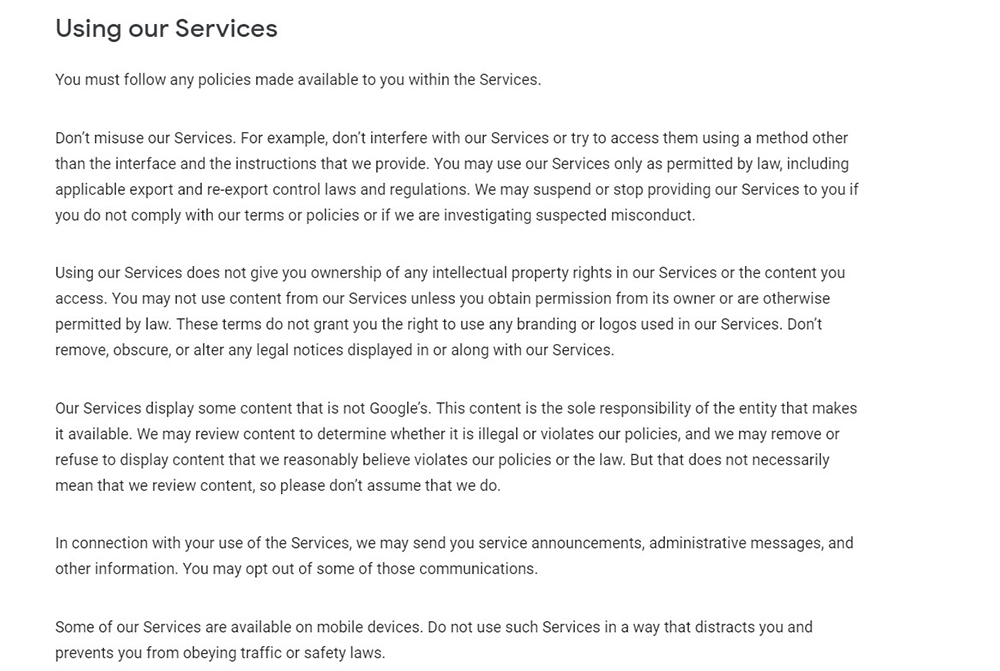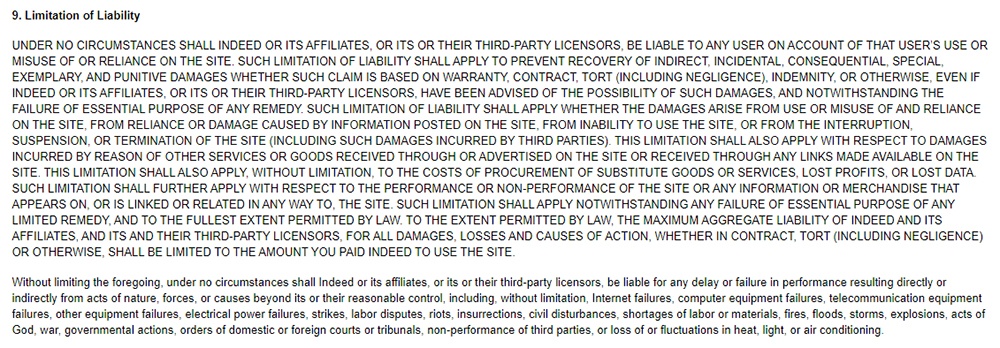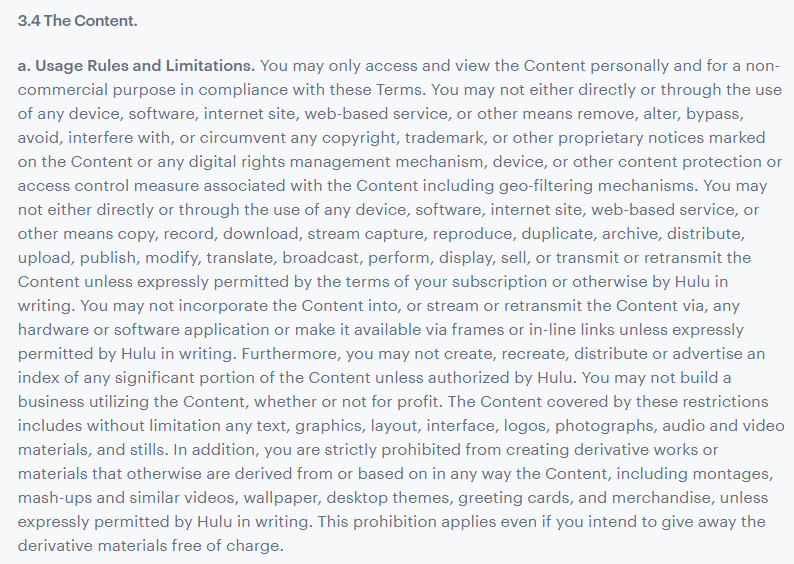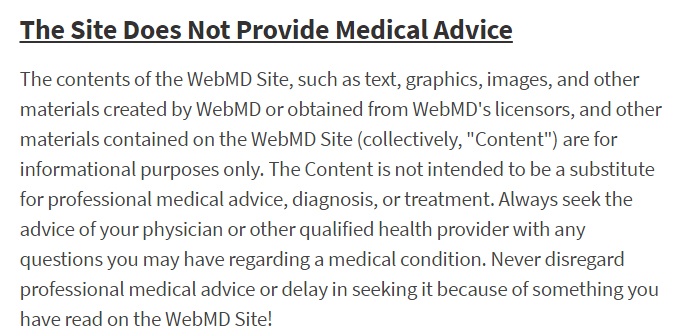Sample Terms and Conditions
Before building a website or app, you should know what a Terms and Conditions agreement (T&C) is, how it's written, and what, precisely, your users should agree to and how.
That's what this article will cover, and by the end you should be able to create, display and get agreement to your own T&C.
What Are Terms & Conditions?
Terms & Conditions, also called "terms of service," are a statement of the rights you reserve, and the rights granted to the other party, in a particular contract. In this case, the "contract" may be presented when you open an account with a website as a set of statements that you have to click "I Agree" in order to access the site, which is binding under the Electronic Signatures in Global and National Commerce Act. This is called "clickwrap" in web development circles.
For sites you don't sign into, and thus operate on an implied contract basis, Terms and Conditions may discuss laws under which the website operates, such as the General Data Protection Regulation (GDPR), in the EU and national and international copyright law. Your T&C may also interact with other documents and policies.
For example, Twitter's terms of service includes a clause stating that the company's Privacy Policy is binding for both parties.

Terms and Conditions are not legally required to enter into a contract on a website. Properly written terms and conditions, however, serve to:
- Establish what uses of your site and associated property are and are not allowed
- Form a basis for removing users, maintain control over how your property is used
- Implement other sets of policies, counteract legal claims against you for content on your site
- Inform customers and visitors about applicable laws and warranties
Without this clarity, you may be exposed to civil or criminal liability, or your client base may fall afoul of laws they don't understand.
Creating Terms & Conditions
T&Cs have a set template most users begin with:
- Limits On User Behavior And Penalties Including Termination
- Intellectual Property
- Governing Laws
- Liability For Actions Of Other Sites
- Content
- Disclaimers
Not all of these sections may be relevant. For example, if you don't have an area visitors sign into and do not allow comments, you likely will not need to include user limits. Nor do the sections need to be in any particular order; consider your users and what's most relevant to them when placing sections. Your T&C should be vetted by counsel if at all possible.
Limits And Termination
For many, this is the practical meat of the T&C, the rules of the site they will point to in disputes. These should discuss what is and is not allowed, and what actions will cause an account to be deleted, a transaction to be voided, or a user banned from the site. Here's an example:

This section can touch certain laws, such as age requirements. However, much of it will come down to how you want to run your business, and may be driven by personal preference or community opinion.
Intellectual Property
This language includes any relevant copyrights. If your site sells the intellectual property of others, the T&C should clarify the standard rights of the purchase. In some cases this will be covered under governing laws, such as the United States standard of "fair use."
Here's an example from Kanopy:

Governing Laws
A T&C should make clear the overarching applicable laws depending on jurisdiction and necessity. These include data collection and protection laws, age limits or content restrictions, and any other relevant statutes. This is especially important if your site is in a country with different laws from a substantial group of your users.
Here's an example of this information in a general clause:

You should clarify that the T&C does not necessarily include all relevant statutes, and it's the responsibility of the user to be informed as to their local laws.
Liability
Lay out what's allowed and what's forbidden on your site. If there's a specific legal basis for this, that should be included, and penalties should be delineated or documentation provided via an outside link from an authoritative source. Otherwise, it should be considered a stipulation of the contract.
Here's an example from Indeed:

Make clear that you are not responsible for the content of other sites or the actions of non-employees or volunteers on the site.
Content
This section explains what users can do with the content they have access to, beyond fair use and copyright concerns. For example, this might be where you clarify what rights you have to photos taken using your app.
Here's an example from Hulu:

Disclaimers
These should disclaim liability and otherwise make clear any potential "use at your own risk" concerns for your site or app. It's common for sites that discuss medical data such as WebMD to issue disclaimers that nothing they publish should be construed as medical advice.

Where Should I Display Terms & Conditions?
A T&C should be displayed, or at least linked to, anywhere people need to consider them and agree to them. There is no requirement that the T&C be reproduced in full on every page, only that it be easily accessible within reason.
A good procedure is to go through your site and consider on each page how a user "touches" your site. Are they required to log in? Can they post comments on the site? Consider adding a T&C link to these areas as well as on your website footer.
How Do I Secure Agreement For My T&C?
Users must agree to the terms and conditions in some form. There are two forms of contract to be considered: Explicit contracts, where we agree to something in print usually when something is being given or accepted by a part in the transaction, and implied contracts, where someone opening the site or app is, by their actions, agreeing to the Terms of Service.
Some sites will operate on a mix of both. Amazon, for example, doesn't require you to sign in to browse what's available or to research prices. To buy from it, however, you must enter into an explicit contract.
The uniting feature of these, however, is the T&C must be easily accessible to anybody who wants to view them at all times, from any page on your website. This can be as simple as a link in the footer of the site that allows access the documents, but it must be there regardless.
For explicit contracts, generally the T&C must be agreed to with an "I Agree" checkbox. This is important because it establishes that both parties understand their rights and obligations in the contract.
The most common location for this checkbox is at the end of the account set-up process, where the T&C and other relevant material will be presented, and the user must agree before the process can continue. They may also turn up the first time you attempt to post something through the site or app, such as when users submit their own content. In short, if something is changing hands, whether it's hard cash or a photo of someone's dog, everyone involved needs to agree to some form of contract explicitly, with a full understanding of what they're engaging in.
For sites working on an implied contract basis, such as blogs that don't allow comments and may be construed as offering guidance on a topic, they can be located in the footer of the site, kept on a separate page of your site, or linked to at the end of posts. The full T&C does not need to be reproduced every time the site is accessed, as a rule, although you should consult with counsel in your specific situation.
Does a T&C Apply Across Borders?
Every website, technically speaking, is a global business. On a practical level, it's unlikely many sites will see substantial numbers of users outside its home country. Still, it is worth a quick consideration.
Some documents are legally required, and as we've seen, those documents are often incorporated into a T&C. Paypal offers a good example, and further its policy clarifies that it applies only to United States residents.

Terms and conditions make clear how your site or app should be used, and how users can get the most out of it. A carefully designed T&C will offer protection and clarity, and let you focus on your users.